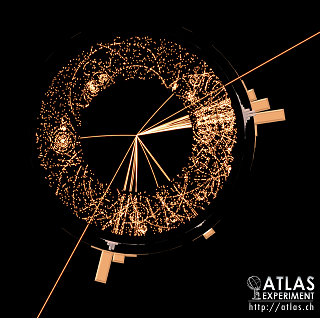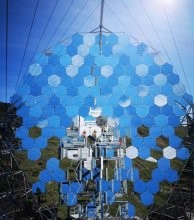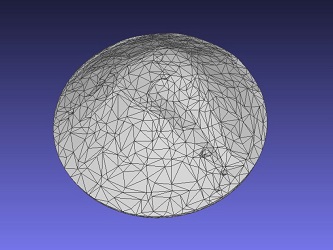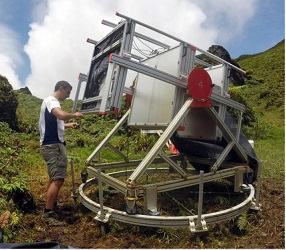
The Annecy Particle Physics Laboratory uses MUST resources for its research in particle physics but also in multi-messenger astronomy as well as for more application-oriented developments.
Several case studies:
-
ATLAS: Access and processing of data from the LHC (CERN)
-
CTA: Storage and Artificial Intelligence Federation at the service of high energy astronomy
-
MUTOMO: In search of a hidden tomb with muon tomography
ATLAS : Access and processing of data from the LHC (CERN)

With several thousand processors continuously used by the ATLAS collaboration and virtually several petabytes of data stored on disk, MUST is part of the global effort needed to exploit data from CERN’s LHC collider.
The collisions produced by the LHC and observed by the ATLAS detector generate an enormous flow of data. To record and process this data, the IT resources of hundreds of institutes around the world have been pooled within a single computing grid infrastructure, connecting thousands of computers and storage systems all together. The collaboration between the team which ensures the operational follow-up of MUST platform and the physicists of ATLAS made this effort a success, since MUST was the first French regional site to be labeled as “nucleus”, given the good functioning and the large volume of disk storage space made available. MUST also offers a local data analysis platform.
MUST team and ATLAS group at LAPP are currently involved in the R&D activities necessary to cope with the continuous increase of data produced by the High-Luminosity LHC (HL-LHC) .
For more information, see the article on data access and processing.
CTA : Storage federation and Artificial Intelligence at the service of high energy astronomy

Since 2018, the CTA (Cherenkov Telescope Array) project has been deploying a new generation of gamma ray telescopes in La Palma (Canary Islands) and Chile. Already heavily involved in the construction of CTA, LAPP is also at the forefront of the storage and analysis of data collected by this future observatory. In fact, more than four petabytes (millions of billions of bytes) of data will be generated per year.
Meeting this challenge will be possible thanks to an R&D program supported by European projects (XDC then ESCAPE), combining the storage resources of MUST and the IN2P3 Computing Center in Lyon within a pilot data architecture. Ultimately, it is the storage capacities of a dozen European data centers, including MUST, which aim to be federated to form a “datalake” compatible with the principles of open science of the EOSC.
Improving software performance is another imperative that MUST contributes to by making GPU computing resources available. As part of a collaboration between LAPP, LISTIC, and the Orobix company, the GammaLearn project intends to apply artificial intelligence, and more particularly deep learning, to the reconstruction of events recorded by CTA. The development of a new model of data analysis has already consumed more than 10,700 hours of GPU computing and 13,400 hours of CPU computing on MUST. Verification on real data is in progress. The simulation of CTA’s telescopes is an essential prerequisite for which the use of MUST is essential. The platform allows significant simulation work to be carried out in a relatively short period of time: in fact, ten years of observations made by several instruments have already been simulated and compared to the data, or approximately one million submitted calculation tasks. Finally, researchers from the LAPP astro-gamma group also use public data from certain NASA missions and in particular those from the Fermi-LAT satellite for their work. This data is also stored and analyzed using MUST. For more information, see the articles on CTA, ESCAPE, the GammaLearn project on LAPP website.
MUTOMO : Looking for a hidden tomb using muon tomography

Identify land upstream of further prospecting, reveal the secrets of a site without discovering it and thus preserve it from environmental attacks … For twenty years, non-invasive excavation techniques with the help of lasers, infrared cameras, or aerial photos have made great progress in archeology.
As part of the MUTOMO project carried out in collaboration with IP2I in Lyon and APC in Paris, LAPP contributes to the development of another non-invasive exploration technique called muon tomography and MUST resources are used to model the path of cosmic particles to find a hidden tomb.
The principle: X-ray a site using muons from the upper layers of the atmosphere. These particles, which bombard the earth with a permanent rate of about 10,000 particles per m2 per minute, interact extremely little with matter and can pass through very thick rocks. Their trajectories are however modified according to density and structure anomalies. Distinguishing the void zones from the denser zones where certain muons will have been absorbed or deflected then becomes possible, provided that the means of calculation such as those of MUST are available and a good modeling tool is available.
LAPP has chosen the site of Appolonia in the Greek region of Thessaloniki as its study site, where there is a mound containing a partially excavated tomb. The MUTOMO team is developing a computer model to analyze the information provided by the muons and to reconstruct a 3D image of the site and its tomb. This work requires the reconstruction of muonic trajectories for which MUST high-performance computing resources, in particular the GEANT4 application, are mobilized.
Once the muon tomography technique is perfected, it can be used to explore other archaeological sites with treasures not yet unveiled. In a different context, it could be applied to earth science, for example to the search for subglacial water pockets, synonymous with risk for populations in the event of sudden rupture.
